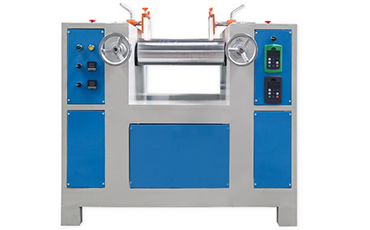In the realm of industrial machinery, efficiency and precision are paramount, and the Two-Roller Mill stands as a testament to this ethos. This article delves into the inner workings of the Two-Roller Mill, its applications, and the transformative impact it has on material processing across various industries.The Two-Roller Mill, also known as a "twin-roll mill" or "double-roll mill," is a versatile machine used to process a wide range of materials, including plastics, metals, ceramics, and more. Its fundamental design consists of two parallel rollers rotating in opposite directions. These rollers apply compression, shearing, and friction forces to transform raw materials into refined products with enhanced properties.
Applications Across Industries
The Two-Roller Mill finds its place in an array of industries, each benefiting from its unique capabilities. In the plastics industry, it facilitates the blending of additives and polymers to achieve uniformity. In the metalworking sector, it aids in refining and shaping metals with precision. Additionally, industries such as pharmaceuticals, food processing, and cosmetics rely on this machine to achieve consistent results.

Key Advantages and Features
Uniform Blending: The counter-rotating rollers ensure thorough mixing and dispersion of materials, resulting in uniform blends and improved product quality.
Particle Size Reduction: The mechanical forces exerted by the rollers break down larger particles, resulting in finer and more homogenous materials.
Customization: The gap between the rollers can be adjusted to control the degree of compression and shearing, allowing for tailored results based on material properties.
Enhanced Properties: The intensive processing can lead to improved material properties such as tensile strength, elasticity, and surface finish.
Energy Efficiency: The compact design and efficient operation of the Two-Roller Mill contribute to energy savings in material processing.
Future Possibilities
As technology advances, so does the potential of the Two-Roller Mill. Integration with automation and digital control systems can further enhance precision and reduce human intervention. Real-time monitoring and data analysis can optimize processes, leading to higher yields and reduced waste. Additionally, the exploration of new materials and their interactions within the Two-Roller Mill can open doors to innovations yet unseen.
The Two-Roller Mill exemplifies the synergy of engineering principles and material science. Its ability to transform raw materials into refined products with precision and efficiency is a cornerstone of modern industrial processes. Across industries, this machine plays a vital role in shaping the materials that define our daily lives. As technology continues to advance, the Two-Roller Mill remains at the forefront of material processing, a testament to human ingenuity and innovation.